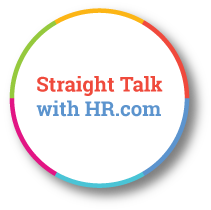Maximizing Elective Benefits' Value During Open Enrollment
Exclusive interview with Barrett Scruggs, Vice President, SoFi at Work
Posted on 08-29-2023, Read Time: 5 Min
Share:

 |
“More than half of employees say finances are the main source of stress in their lives, but many may not realize how it affects their mental and physical health, job satisfaction, and productivity. Employees want to stay with companies that prioritize their well-being, and two out of three workers (68%) would sacrifice at least one other key benefit to keep their financial benefits,” says Barrett Scruggs, Vice President, SoFi at Work. In his role at SoFi, he oversees a team of consultative employee financial well-being professionals who design and deliver SoFi at Work’s solutions through on-demand, digital interventions for employers across the United States. |
In an exclusive interaction with HR.com, Barrett talks about how human resources (HR) leaders can encourage engagement with their benefits programs year-round.
Q: With the tight labor market and the high importance employees place on benefits, what specific communication strategies do you recommend to effectively convey the value of elective benefits such as student loan repayment programs and emergency savings funds during open enrollment?
Barrett: Clear communication is vital during open enrollment to ensure elective benefits don’t get overlooked. Consider that 38% of Americans put off medical care last year due to rising costs. While health care is top of mind during open enrollment, take the opportunity to connect the dots between how financial benefits can help employees budget for and prioritize mental and physical care.Beyond open enrollment, regular and open feedback between HR and employees is a strong starting point for understanding a workforce’s needs. HR managers should conduct internal surveys and ask employees at least twice a year what their financial pain points are and personalize benefits messaging accordingly. For example, if you find a large percentage of your workforce is focused on paying off student loan debt in 2023, you know to highlight specific financial well-being benefits like student loan contribution programs. Avoiding jargon and incorporating data and real-life examples helps demonstrate the impact of your company’s benefit offerings in a more personalized way.
Q: Many HR leaders struggle to engage employees year-round in benefits programs. Could you share some practical tips on how HR leaders can maintain consistent engagement with these programs beyond the open enrollment period?
Barrett: Repetition is key; don’t rely on the open enrollment period to drive adoption for elective benefits. Busy employees require consistent touchpoints year-round as a reminder to maximize their benefits. Try scheduling communications around a moment in time, such as National Wellness Month in August or back to school in the fall, to make your message especially relevant. You can also connect your benefits to timely themes or pressing concerns, such as rising inflation or changes to student loan policies, to show you’re paying attention to what’s impacting their life outside of work. Tracking spikes or drops in engagement throughout the year can help indicate when your employees are most dialed in so you can adjust your communications strategy accordingly.Q: As the landscape of employee benefits evolves, what innovative communication approaches have you seen that successfully capture employees' attention and drive the adoption of elective benefits?
Barrett: We’re seeing HR leaders implement new, effective communication styles regularly – especially with the evolution of hybrid work. Many companies are bringing in external experts for webinars and Q+As to dive into benefit offerings more in-depth. By holding an interactive session, employees can ask questions and learn how benefits can help them meet personal goals. Holding wellness challenges can also get employees excited about using their benefits and help drive adoption.Q: Employee well-being is a critical factor in retaining talent. How can HR leaders effectively integrate well-being initiatives into their communication strategy to emphasize the overall financial well-being aspect of elective benefits?
Barrett: More than half of employees say finances are the main source of stress in their lives, but many may not realize how it affects their mental and physical health, job satisfaction, and productivity. Employees want to stay with companies that prioritize their well-being, and two out of three workers (68%) would sacrifice at least one other key benefit to keep their financial benefits. To retain talent, HR leaders need to show they’re listening and care about what their employees want from their benefits programs. They can start by educating employees on the far-reaching impacts of financial well-being and connect the dots between financial benefits and personal wellness goals, like being able to afford more nutritious food or sleeping easier knowing you have an emergency savings fund in place.Q: Given the diversity of the modern workforce, how do you recommend tailoring the communication strategy to effectively reach and engage all employees, including remote workers or those from different age groups and backgrounds, during open enrollment?
Barrett: Addressing the needs of a diverse workforce will require an understanding of your employees’ varying financial needs and goals. Younger employees focused on paying off student loan debt may not resonate with retirement planning, for example, while communicating that information is going to be essential for older employers. I recommend using a variety of communication channels to reach employees from different age groups and backgrounds during open enrollment as well as year-round.Some employees might engage more with webinars, virtual information sessions, and email updates, while others may actually prefer snail mail or 1:1 meetings with their HR manager to get a break from the digital noise. Ensure digital content is accessible to all employees by adding descriptive alt-text to any images and subtitles to videos. When in doubt, send out an employee poll to see what kind of communication style each group prefers.
Error: No such template "/CustomCode/topleader/category"!
